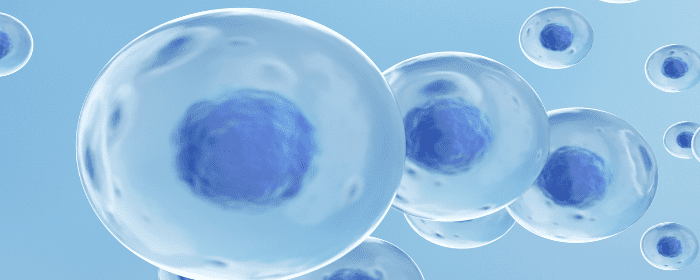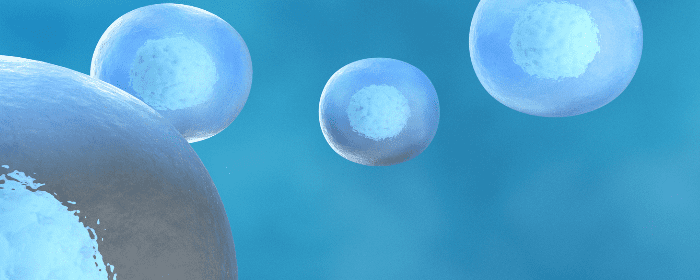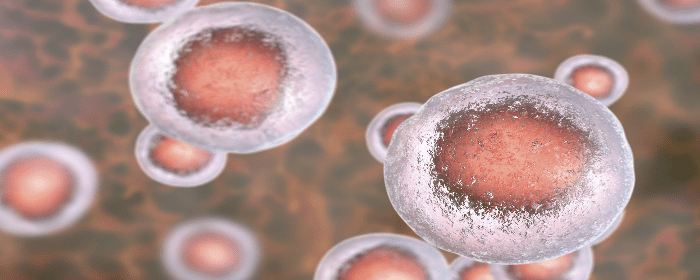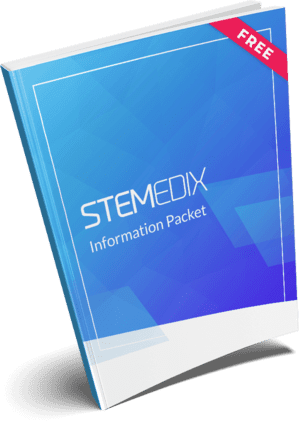
by admin | Jun 3, 2022 | Parkinson's Disease, Stem Cell Research
Research has shown neuroinflammation to have a significant role in the pathogenesis of Parkinson’s disease (PD). Much of this same research has also demonstrated mesenchymal stem cells (MSCs), and specifically, allogeneic bone marrow-derived MSCs, can be effectively used as an immunomodulatory therapy for the potential treatment of PD.
The goal of Schiess et al.’s study was to evaluate the safety and tolerability of first-of-its-kind intravenous allogeneic bone marrow-derived MSCs (allo-hMSCs) in patients with PD.
Neurological disorders continue to be the leading cause of disability-adjusted life years lost worldwide (a statistical measure of years of healthy life lost as a result of death or disability relating to the constitution). While the numbers of those diagnosed with neurological disorders, including stroke, multiple sclerosis, motor neuron disease, and dementia continue to increase at a rapid rate, none are growing as fast as PD.
Considering the rapid progression of progressively intensifying symptoms associated with PD and the relatively poor progress in the discovery of therapies to prevent, or even slow, progression of PD, the authors identified the identification of effective and safe disease-modifying therapies for PD to be a priority.
As part of this study, Schiess et al. studied the peripheral immune system in PD neurodegeneration through the evaluation of LPS rat models, glial cells, and cerebrospinal fluid gathered from patients. As a result of these investigations, the authors determined that an adaptive immune response does contribute to progression supporting the rationale for using MSCs as a potential therapy for PD.
To evaluate the effectiveness of this therapy, Scheiss et al. developed and conducted a single-center, open-label, ascending-dose-escalation phase 1 clinical study involving 20 patients with mild to moderate PD. Participants were assigned to single intravenous doses of 1 of 4 doses and evaluated at weeks 3, 12, 24, and 52 post-infusion.
In addition to evaluating the safety and tolerability of an intravenous infusion of bone marrow-derived allow-hMSCs, the research team also evaluated participants for relevant biomarkers for the mechanism of action and clinical assessment of PD progression.
The authors point out that while there were no serious adverse reactions related to the infusion and no responses to donor-specific human leukocyte antigens, the most commonly reported side effect was dyskinesias and hypertension. Further studies will need to monitor the emergence or exacerbation of post-infusion dyskinesias and hypertension to better understand their occurrence as part of this study.
In conclusion, Sheiss et al. found that a single infusion of allogeneic MSCs ranging from 1 to 10×106 intravenous allo-hMSCs/kg was safe, well tolerated, and not immunogenic in patients with mild-to-moderate PD. The authors also found that peripheral inflammation markers appeared to be reduced at 52 weeks after receiving the highest dose, leading to the conclusion that the highest dose had the most significant effect at the 52-week interval.
Based on these findings, the authors recommend moving forward with a phase 2 randomized, placebo-controlled efficacy trial using allo-hMSCs in a larger population of well-defined Parkinson’s disease patients.
Source: “Allogeneic Bone Marrow-Derived Mesenchymal Stem Cell Safety in ….” 27 Mar. 2021, https://movementdisorders.onlinelibrary.wiley.com/doi/full/10.1002/mds.28582.

by admin | May 13, 2022 | Mesenchymal Stem Cells, Stem Cell Research
Multiple system atrophy (MSA) is a rare, degenerative adult-onset neurological disorder that affects your body’s involuntary functions, including blood pressure, breathing, bladder function, and motor control. MSA also demonstrates several symptoms similar to those accompanying Parkinson’s disease, including slow movement, stiff muscles, and loss of balance[1].
Considering the rapid and fatal progression of MSA, there are not currently any long-term drug treatments known to produce therapeutic benefits against the condition. The typical neuropathological hallmarks of MSA are bone marrow destruction and cell loss in the striatonigral region of the brain that results in dopamine deficiency significant enough to result in behavioral abnormalities.
Since mesenchymal stem cells (MSCs) have demonstrated the ability to self-renew and differentiate within a wide variety of tissues, Park et al., in this study, aimed to assess whether the transplantation of human-derived MSCs could have beneficial effects in a double-toxin-induced MSA rat model. Additionally, the authors assessed the signaling-based mechanisms underlying the neuroprotective effects of MSCs.
Specifically, as part of this study, Park et al. studied the effects of MSCs in 60 rats randomly allocated to one of six groups – a control group, a double-toxin group, two groups receiving MSC intra-arterial (IA) injections, and two groups receiving MSC transplantation via intrathecal (IT) injection after double-toxin induction.
After receiving treatment each group of rats underwent a variety of tests, including the Rotarod test, gait test, and grip strength test. Additionally, the brain tissue of the rats was collected, preserved, and evaluated to assess notable differences.
At the conclusion of this study, the authors found clear evidence of the protective effects of MSCs on double-toxin-induced MSA. The study also demonstrated that transplantation of MSCs prevented neuronal cell death and improved behavioral disorders caused by double-toxin-induced MSA, specifically by reducing dopaminergic neurodegeneration and neuroinflammation.
Additionally, Park et al.’s study demonstrated a higher expression of polyamine modulating factor-binding protein 1 and a lower expression of 3-hydroxymethyl-3-methylglutaryl-COA lyase (HMGCL) after MSC transplantation.
Park et al. also point out that further investigation is required to better understand the exact mechanism of neuron-specific knockdown in vivo animal and clinical trials.
The authors of this study conclude that treating MSA with bone-marrow-derived MSCs protects against neuronal loss by reducing polyamine- and cholesterol-induced neural damage and may represent a promising new therapeutic treatment option for MSA.
Source: “Prevention of multiple system atrophy using human bone marrow ….” 11 Jan. 2020, https://stemcellres.biomedcentral.com/track/pdf/10.1186/s13287-020-01590-1.pdf.
[1] “Multiple system atrophy (MSA) – Symptoms and causes – Mayo Clinic.” 21 May. 2020, https://www.mayoclinic.org/diseases-conditions/multiple-system-atrophy/symptoms-causes/syc-20356153. Accessed 4 Apr. 2022.

by admin | May 6, 2022 | Stem Cell Therapy, Mesenchymal Stem Cells, Multiple Sclerosis, Stem Cell Research
Multiple sclerosis (MS) is a chronic inflammatory disease that attacks myelin, the protective sheath that covers nerves and causes progressive and serious communication issues between the brain, central nervous system, and the rest of the body[1].
Currently, it’s estimated that over 2.3 million people worldwide, and over one million people in the US have a diagnosis of MS[2].
While there have been significant improvements in treatments designed to stabilize, delay, and even improve symptoms of MS, new and more effective treatments are needed to improve the long-term outcome associated with the condition.
One area currently being investigated as a potential therapeutic option for treating MS is the use of regenerative medicine, also known as stem cell therapy, and specifically treatment using mesenchymal stem cells (MSCs).
In this review of evidence from preclinical and clinical studies, Gugliandolo et al. examine studies involving the use of MSCs or their derivatives in vivo models of MS and patients affected by MS. The authors also examine and discuss the feasibility of autologous MSCs therapy for MS patients.
Specifically, and when assessed in terms of effectiveness when treating MS, the therapeutic potential of MSCs was associated with their differentiation capacity and paracrine effects, their ability to differentiate toward oligodendrocytes and express oligodendrocyte progenitor cell (OPC) markers, and their capacity for homing (moving towards the damaged area following chemical gradients).
As part of this review, the authors also examined the effectiveness of various sources of MSC in MS models, these sources included bone marrow MSCs (BM-MSCs), adipose tissue-derived MSCs (AD-MSCs), periodontal ligament stem cells (PDLSCs), skin-derived MSCs (S-MSCs), Wharton’s jelly-derived MSCs (WJ-MSCs), human umbilical cord MSCs (UCMSC), human amnion mesenchymal cells (AMCs), placental derived MSCs (PMSCs), and decidua derived MSCs (DMSCs). According to the research reviewed by Gugliandolo et al., all MSCs, regardless of where they were harvested from, demonstrated beneficial effects in the therapeutic treatment of MS.
Specifically, the results demonstrated that MSCs were able to produce some form of protective effects in reducing inflammatory cell infiltration, disease score, demyelination, and blood-brain barrier disruption.
A review of 29 phase 1 or 2 clinical trials registered on clinicaltrials.gov demonstrated that MSCs, regardless of the type and method of administration, demonstrated to be safe and absent of severe adverse effects with the majority demonstrating measurable improvements when used in MS patients.
While clinical trials demonstrated the safety of administration of MSC in MS patients, the authors were particularly interested in learning if autologous MSC transplantation presented some advantages over heterologous administration.
The authors of this review found that samples obtained from healthy controls and MS patients showed similar features, indicating the possibility of autologous stem cell therapy in MS patients. However, other studies found that MSCs obtained from MS patients exhibited a different transcriptional pattern and fewer immunosuppressive functions compared to healthy donor MSCs.
Gugliandolo et al. point out that limits to these experimental studies include the use of animals of a single gender, given that sex-dependent differences exist and the use of different MS models, different number of transplanted cells, different MSCs sources, and routes of administration. These limitations make it difficult to define the optimal treatment in terms of cell type, dose, and administration conditions.
The authors conclude that clinical trials demonstrate the safety and feasibility of MSCs treatment, and also some improvements, but more data on larger cohorts are required to establish their efficacy. Considering the controversial results pertaining to the features of MSCs derived from MS patients, the authors also call for additional research in order to conclusively determine the safety and efficacy of autologous MSCs therapy in MS patients.
Source: “Mesenchymal Stem Cells in Multiple Sclerosis – NCBI.” 17 Nov. 2020, https://www.ncbi.nlm.nih.gov/pmc/articles/PMC7698327/.
[1] “Multiple sclerosis – Symptoms and causes – Mayo Clinic.” 7 Jan. 2022, https://www.mayoclinic.org/diseases-conditions/multiple-sclerosis/symptoms-causes/syc-20350269.
[2] “Understanding MS | National Multiple Sclerosis Society.” https://www.nationalmssociety.org/What-is-MS/MS-FAQ-s.

by Stemedix | May 2, 2022 | Stem Cell Therapy, Regenerative Medicine, Stem Cell Research
When you live with chronic pain, almost any treatment option that offers relief can be tempting. Undergoing surgery for joint pain is a serious decision. Surgery comes with many risks, including potentially long and painful recovery times, and there is no guarantee that surgical treatments will resolve your pain. Before deciding whether surgery is the right step for you, take a moment to consider the following reasons why regenerative medicine, also known as stem cell therapy, might be an effective option.
Regenerative Medicine Is Minimally Invasive
The body’s natural response to surgical intervention is to create inflammation. Post-surgical swelling can be serious enough to prevent or limit movement and slow recovery time. Stem cell therapy is minimally invasive — involving only administrations at the injured site. A regenerative medicine provider first prepares the treatment area by applying a local anesthetic, which can minimize discomfort.
Instead of causing inflammation, stem cells have the ability to reduce swelling and support the body’s natural healing response. There is typically little or no downtime with stem cell therapy. Most patients can return to normal daily activity, following some post-procedure protocols, as soon as they leave the clinic.
Stem Cell Therapy Has Fewer Risks and Complications
No medical procedure is 100% risk-free. However, few complications are associated with stem cell therapy, especially when compared to surgery. The risks of even the most common surgical procedures include infection, damage to nerves or blood vessels, deep vein thrombosis, and adverse reactions to anesthesia.
Stem cell therapy does pose a few risks, most of which are mild and rare. Headache, nausea, swelling, or itching at the injection site are possible. Infection due to stem cell therapy is possible but extremely rare.
Regenerative Medicine Is More Cost-Effective
Stem cell therapy is not inexpensive, and most costs may have to be paid out of pocket since insurance, today, is still not covering treatments. Even with these considerations, the long recuperation and additional costs of surgery can add up. The costs associated with a possible long recuperation time, child care, and potentially lost wages may outweigh the costs of stem cell therapy considerably.
What Is Best for You?
Ultimately, each patient needs to do their individual research and weigh the pros and cons of any medical options before making an informed decision. Stem cell therapy is utilized to manage many conditions, including neurodegenerative and autoimmune conditions, and it serves as a potentially helpful approach in pain management contexts. Before deciding on a risky surgery, consult with a regenerative medicine specialist at Stemedix to learn more about your available options. If surgery is ultimately the best route for your recovery and wellness, stem cell therapy can still be an excellent post-surgery recovery tool.

by admin | Mar 25, 2022 | Mesenchymal Stem Cells, Neurodegenerative Diseases, Stem Cell Research, Stem Cell Therapy
Neurodegenerative conditions such as Alzheimer’s disease (AD), Parkinson’s disease (PD), and amyotrophic lateral sclerosis (ALS) occur when neuron populations begin to diminish. There is currently no cure for these types of diseases, though clinical trials to explore various treatment options are ongoing. In particular, regenerative medicine, also known as stem cell therapy, is being heavily researched and has shown remarkable progress in controlling these conditions.
Types of Stem Cells
Stem cells serve as the foundation for every tissue and organ throughout the body. They are unspecialized but have the incredible ability to differentiate into virtually any cell type, as well as the power to self-renew.
Neurodegenerative conditions are characterized by neurons that progressively lose their function and structure, and eventually die off. Because stem cells are able to differentiate into multiple cell types, researchers have begun exploring whether they could replace or repair damaged neurons to control the progression of, or potentially even reverse the damage done by, these illnesses. Existing treatment options are limited, but many researchers are optimistic about stem cells’ potential.
Not all stem cells are the same. Here are the various types, some of which show more efficacy as a treatment for neurodegenerative disease than others:
- Tissue-specific stem cells: These somewhat specialized stem cells can generate multiple organ-specific cells and are typically located in areas of the body that can self-replenish, such as the skin and blood.
- Embryonic stem cells (ESCs): Located in blastocysts, ESCs are especially promising in neurodegenerative applications. Yet, they do pose some risks, including the risk of rejection. Due to their ability to differentiate into neurons, however, they continue to be studied as a potential therapy.
- Induced Pluripotent Stem Cells (iPSCs): iPSCs are artificially derived from adult cells and programmed back to pluripotency, thereby allowing for an unlimited source of any cell type. While they are widely used for developing medications and disease modeling, further research must be done to refine the reprogramming process.
- Mesenchymal Stem Cells (MSCs): MSCs can differentiate into several types of cells. Their self-renewal capabilities are far-reaching, making them an ideal candidate for therapies involving tissue repair. They may also be leveraged for cell transplantation in the treatment of neurodegenerative diseases.
- Neural Stem Cells (NSCs): NSCs are derived from specific areas of the brain and are therefore specialized cells. They, too, are self-renewing and multipotent.
Types of Neurodegenerative Conditions Regenerative Medicine can Help Manage:
While researchers are uncovering new findings on how stem cells can treat neurodegenerative conditions nearly every day, there has already been progress. Here are some of the conditions stem cell therapy has been used to manage:
- Parkinson’s Disease (PD): One hallmark characteristic of PD is the decline of dopamine, caused by the destruction of dopamine-producing brain cells. As dopamine decreases, symptoms such as muscle tremors, challenges with movement, and difficulty thinking arise. Now, researchers have found that stem-cell-derived dopaminergic neurons — in particular, those created through ESCs and iPSCs — could hold success in replacing the destroyed brain cells in individuals with PD.
- Alzheimer’s Disease: Through the use of stem cell therapy, researchers at Columbia University have refined the protocol for a unique process of converting skin cells into brain cells. This option streamlines the process of creating neurons to replace those which have become damaged by Alzheimer’s disease. In their research, the cells were able to receive signals just as normal neurons would.
- ALS: ALS has proven remarkably challenging to study, as there are many potential causes and therapies may therefore only be effective on specific patient populations. Moreover, the motor neurons, which are directly impacted by the condition, couldn’t be acquired in large enough numbers to study. Now, however, Harvard researchers have been able to derive mature cells that can be manipulated back into stem cells from ALS patients, opening up new doors for studying potential therapies to treat the condition.
While there is more ground to cover before stem cell therapy for neurodegenerative conditions can become mainstream, promising research is consistently being published. Moving forward, it’s likely that stem cells will hold the answer to viable management options for these and other challenging conditions.

by admin | Jan 21, 2022 | Stem Cell Therapy, Mesenchymal Stem Cells, Stem Cell Research, Stroke
According to the CDC, stroke continues to be a major cause of serious disability for adults. It is also estimated that nearly 800,000 people in the United States have a stroke each year[1]. While 80% of those experiencing a stroke survive for at least one year following the event, more than 70% will continue to experience long-term disabilities.
Stroke is divided into three distinct phases: acute, subacute, and chronic phases. The acute phase of stroke occurs within 24 hours of the actual ischemic event. The subacute phase starts at 24 hours and lasts up to 3 months. The chronic phase of stroke, by definition, starts at 3 months.
While stroke patients tend to see some response to rehabilitation efforts occurring in the chronic phase, they tend to quickly plateau, leaving many with serious chronic neurological and functional disabilities. To date, there are no approved treatments for the chronic phase of stroke.
For the purposes of this study, Steinberg et al. report the two-year outcomes of their phase 1/2a study examining chronic stroke patients after implantation of mesenchymal stem cells (MSCs). This study specifically examined the outcomes of 18 patients who were at least 6 months post-stroke onset and had chronic motor deficits secondary to the nonhemorrhagic stroke.
At the 1-year point of this study, the authors reported the implantation of bone marrow-derived MSCs (BMD MSCs) was generally safe, well-tolerated, and associated with significant improvement in clinical outcomes.
There were no correlations between improvement in clinical outcomes and cell dose, baseline patient age, or baseline stroke severity. However, two years after implantation of MSCs, those enrolled in this study experienced significant improvement in motor impairment scales as indicated by a number of scores, including the ESS, NIHSS, F-M total, and FMMS scores.
Although all enrolled patients experienced at least one Treatment-Emergent Adverse Event (TEAE), with headache and nausea being the most common, 94.4% of the TEAEs were determined to be unrelated and no one withdrew from the study.
Interestingly, the authors reported that there also appears to be a significant correlation between the size of newly appearing transient lesions primarily in or adjacent to the premotor cortex – a finding that remained consistent at month 12 and month 24 of this study.
While Steinberg et al.’s reported findings are encouraging, the authors point out that the small scale and uncontrolled study design mean the findings should also be interpreted with caution.
Steinberg et al conclude that their findings associated with this completed, open-label, single-arm phase 1/2a study was consistent with the data at the 1-year point and indicated that treatment of chronic stroke with BMD MSCs after 2 years continued to be safe and was associated with sustained and significant improvements in clinical outcomes.
Given the findings of this study, the authors highlight the potential of MCSs, and specifically SB623 cells used in this study, as a potential treatment for patients with chronic ischemic stroke.
Source: “Two-year safety and clinical outcomes in chronic ischemic stroke ….” 23 Nov. 2018, https://pubmed.ncbi.nlm.nih.gov/30497166/.
[1] “Stroke | cdc.gov.” https://www.cdc.gov/stroke/index.htm.







 St. Petersburg, Florida
St. Petersburg, Florida
